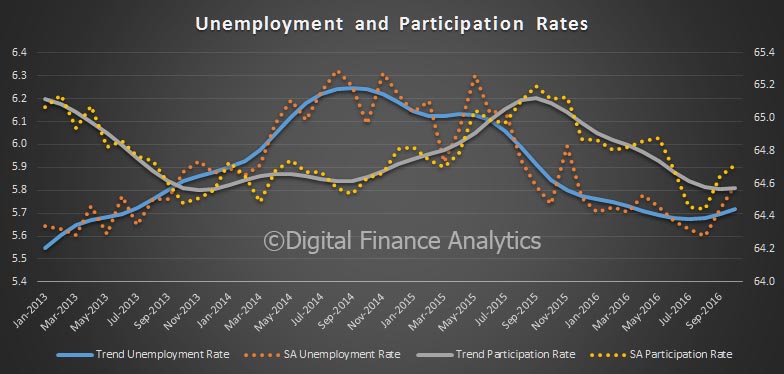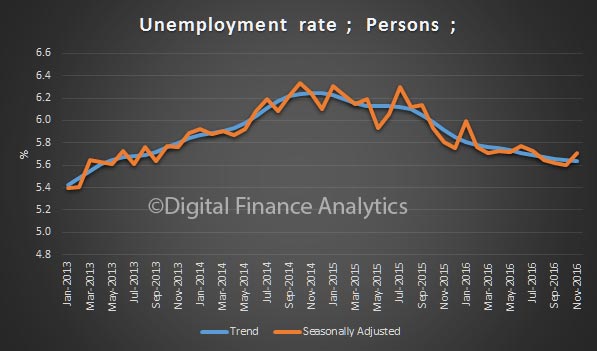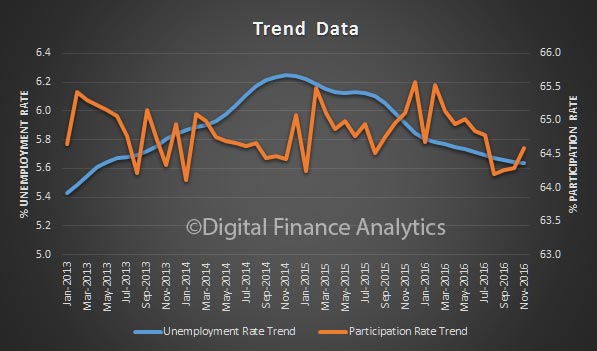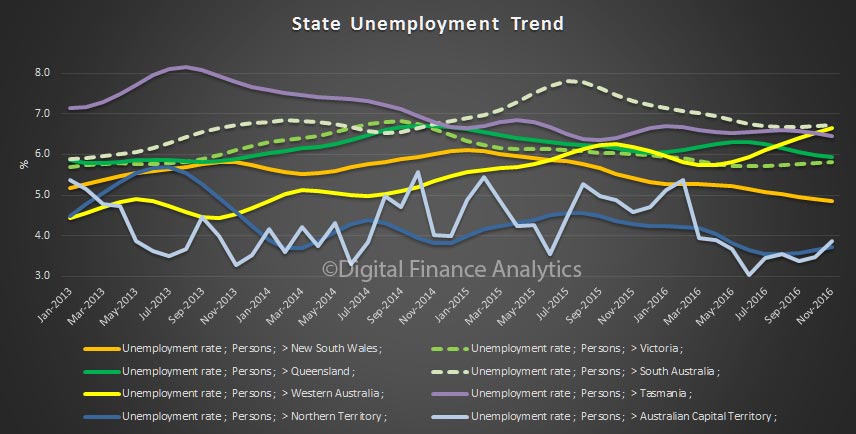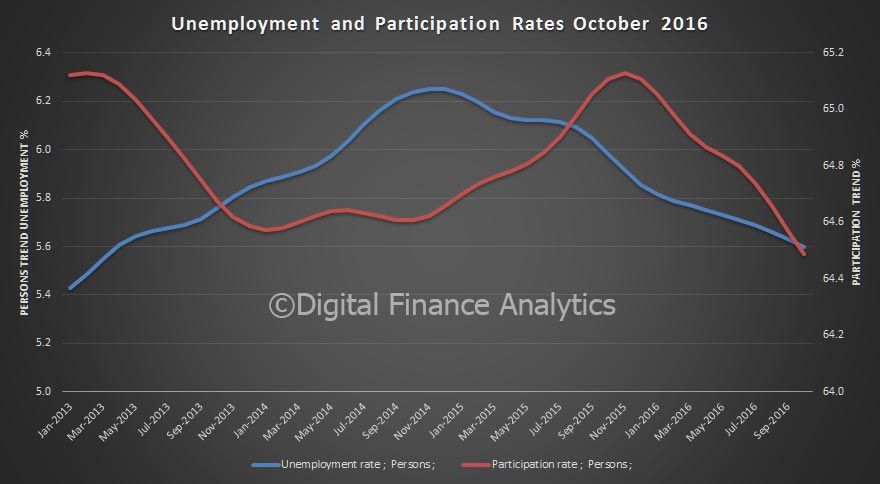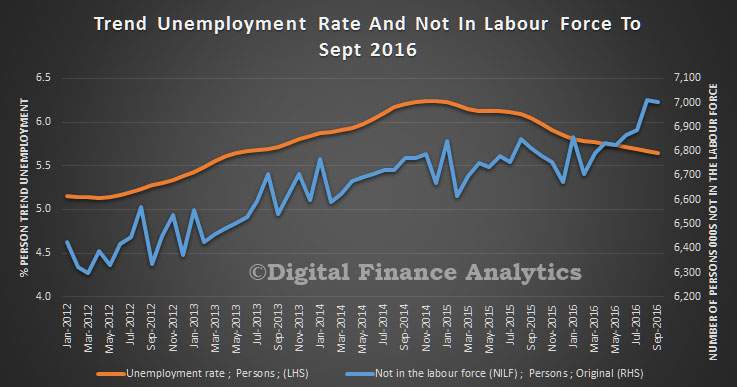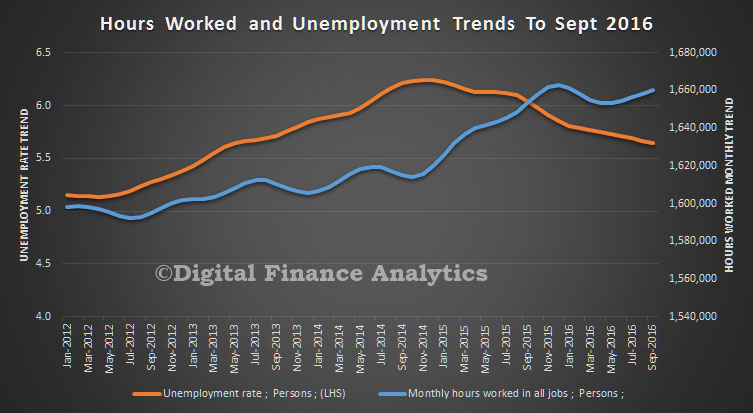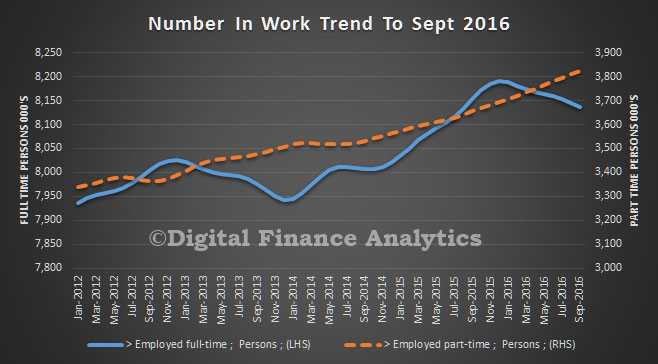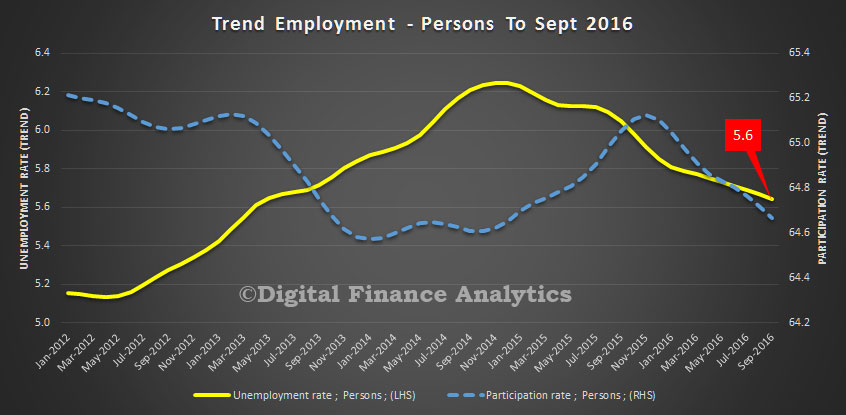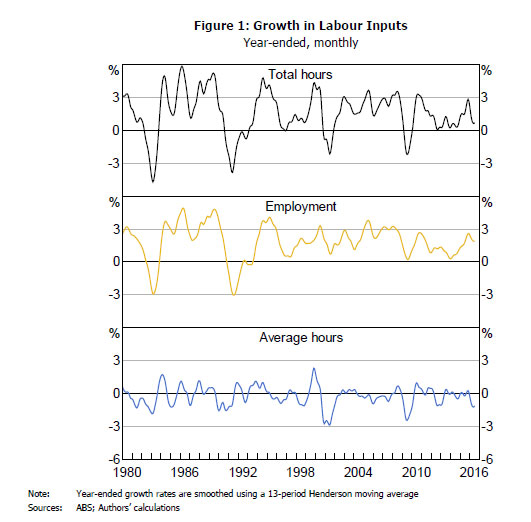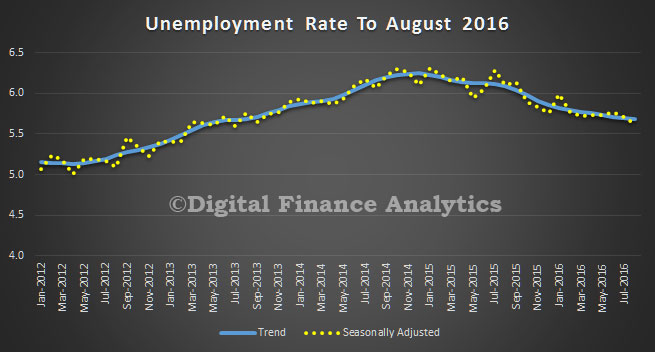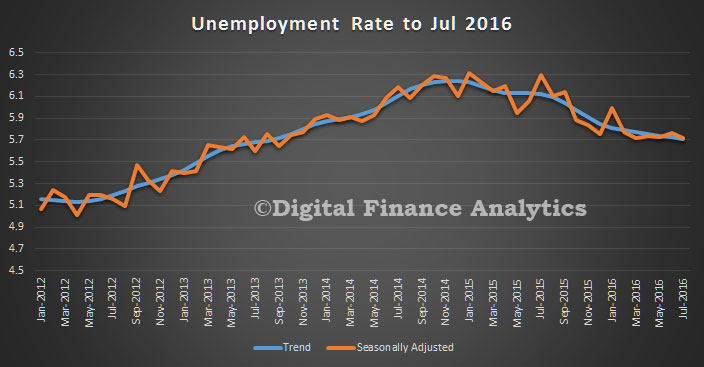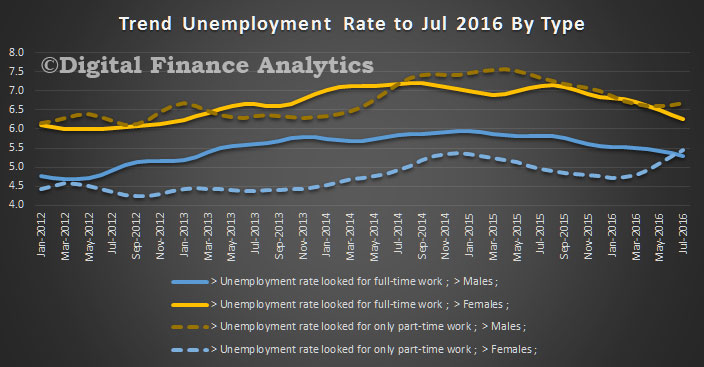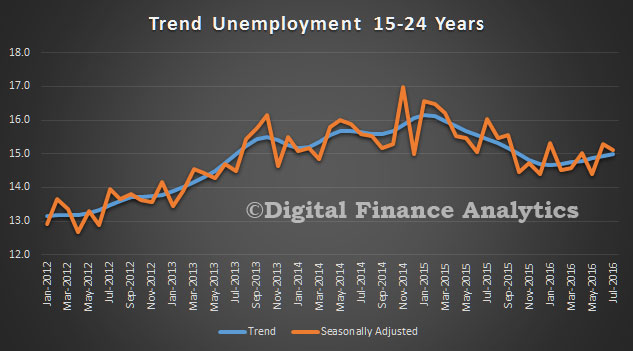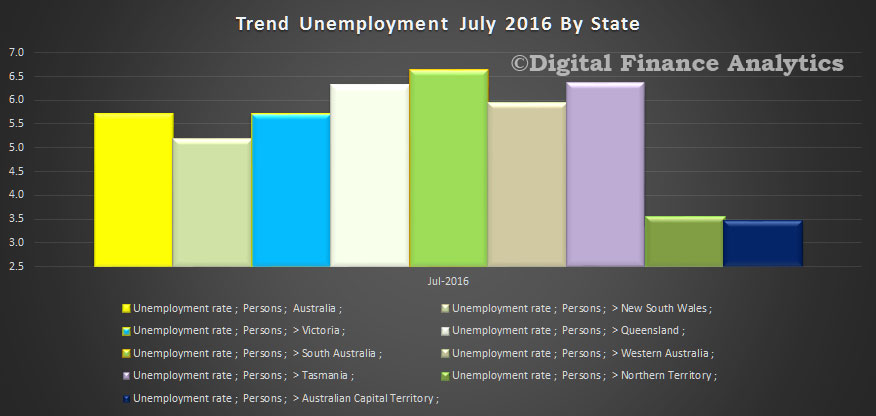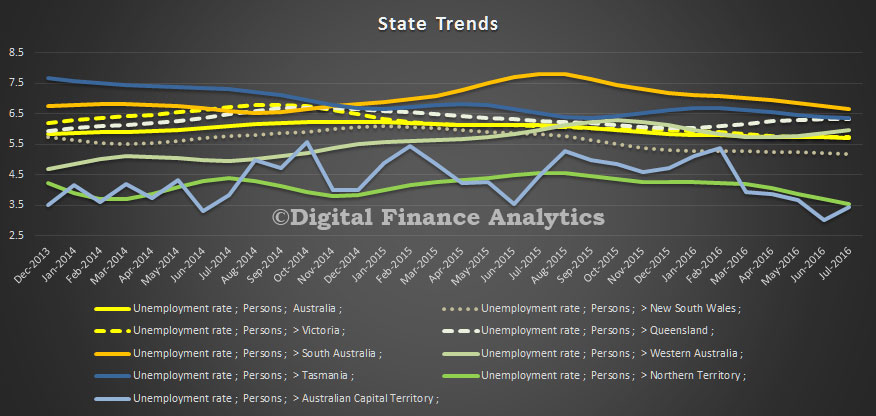Household Survey Data
The unemployment rate, at 4.7 percent, and the number of unemployed persons, at 7.5 million, changed little in December. However, both measures edged down in the fourth quarter, after showing little net change earlier in the year.
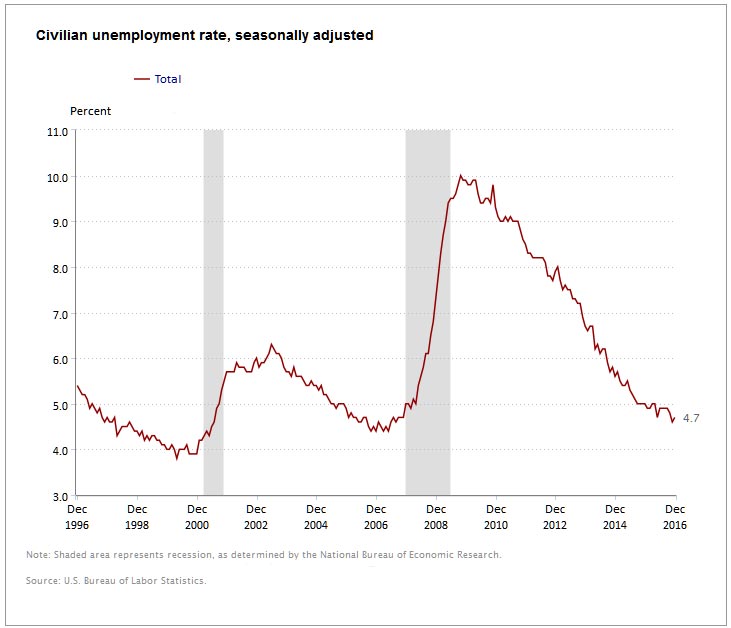 Among the major worker groups, the unemployment rates for adult men (4.4 percent), adult women (4.3 percent), teenagers (14.7 percent), Whites (4.3 percent), Blacks (7.8 percent), Asians (2.6 percent), and Hispanics (5.9 percent) showed little change in December.
Among the major worker groups, the unemployment rates for adult men (4.4 percent), adult women (4.3 percent), teenagers (14.7 percent), Whites (4.3 percent), Blacks (7.8 percent), Asians (2.6 percent), and Hispanics (5.9 percent) showed little change in December.
The number of long-term unemployed (those jobless for 27 weeks or more) was essentially unchanged at 1.8 million in December and accounted for 24.2 percent of the unemployed. In 2016, the number of long-term unemployed declined by 263,000.
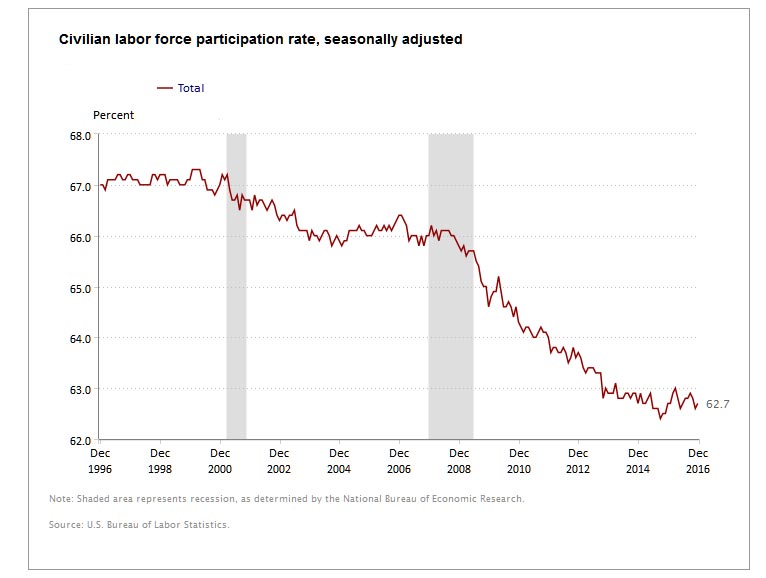 The labor force participation rate, at 62.7 percent, changed little in December and was unchanged over the year. In December, the employment-population ratio was 59.7 percent for the third consecutive month; this measure showed little change, on net, in 2016.
The labor force participation rate, at 62.7 percent, changed little in December and was unchanged over the year. In December, the employment-population ratio was 59.7 percent for the third consecutive month; this measure showed little change, on net, in 2016.
The number of persons employed part time for economic reasons (also referred to as involuntary part-time workers), at 5.6 million, was essentially unchanged in December but was down by 459,000 over the year. These individuals, who would have preferred full-time employment, were working part time because their hours had been cut back or because they were unable to find a full-time job.
In December, 1.7 million persons were marginally attached to the labor force, little changed from a year earlier. (The data are not seasonally adjusted.) These individuals were not in the labor force, wanted and were available for work, and had looked for a job sometime in the prior 12 months. They were not counted as unemployed because they had not searched for work in the 4 weeks preceding the survey.
Among the marginally attached, there were 426,000 discouraged workers in December, down by 237,000 from a year earlier. (The data are not seasonally adjusted.) Discouraged workers are persons not currently looking for work because they believe no jobs are available to them. The remaining 1.3 million persons marginally attached to the labor force in December had not searched for work for reasons such as school attendance or family responsibilities.
Establishment Survey Data
Total nonfarm payroll employment rose by 156,000 in December, with an increase in health care and social assistance. Job growth totaled 2.2 million in 2016, less than the increase of 2.7 million in 2015.
Employment in health care rose by 43,000 in December, with most of the increase occurring in ambulatory health care services (+30,000) and hospitals (+11,000). Health care added an average of 35,000 jobs per month in 2016, roughly in line with the average monthly gain of 39,000 in 2015.
Social assistance added 20,000 jobs in December, reflecting job growth in individual and family services (+21,000). In 2016, social assistance added 92,000 jobs, down from an increase of 162,000 in 2015.
Employment in food services and drinking places continued to trend up in December (+30,000). This industry added 247,000 jobs in 2016, fewer than the 359,000 jobs gained in 2015.
Employment also continued to trend up in transportation and warehousing in December (+15,000). Within the industry, employment expanded by 12,000 in couriers and messengers. In 2016, transportation and warehousing added 62,000 jobs, down from a gain of 110,000 jobs in 2015.
Employment in financial activities continued on an upward trend in December (+13,000). This is in line with the average monthly gains for the industry over the past 2 years.
In December, employment edged up in manufacturing (+17,000), with a gain of 15,000 in the durable goods component. However, since reaching a recent peak in January, manufacturing employment has declined by 63,000.
Employment in professional and business services was little changed in December (+15,000), following an increase of 65,000 in November. The industry added 522,000 jobs in 2016.
Employment in other major industries, including mining, construction, wholesale trade, retail trade, information, and government, changed little in December.
The average workweek for all employees on private nonfarm payrolls was unchanged at 34.3 hours in December. In manufacturing, the workweek edged up by 0.1 hour to 40.7 hours, and overtime edged up by 0.1 hour to 3.3 hours. The average workweek for production and nonsupervisory employees on private nonfarm payrolls remained at 33.6 hours.
In December, average hourly earnings for all employees on private nonfarm payrolls increased by 10 cents to $26.00, after edging down by 2 cents in November. Over the year, average hourly earnings have risen by 2.9 percent. In December, average hourly earnings of private-sector production and nonsupervisory employees increased by 7 cents to $21.80.
The change in total nonfarm payroll employment for October was revised down from +142,000 to +135,000, and the change for November was revised up from +178,000 to +204,000. With these revisions, employment gains in October and November were 19,000 higher than previously reported. Over the past 3 months, job gains have averaged 165,000 per month.

